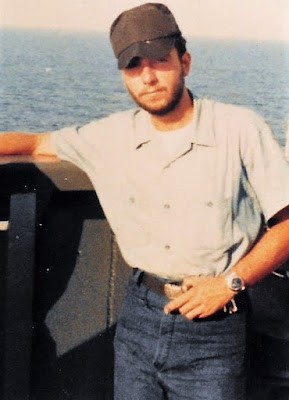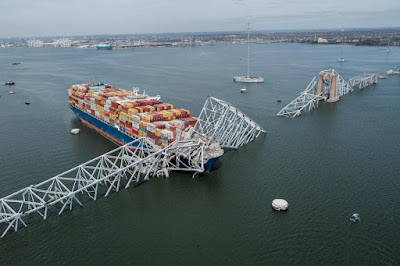This Easter, as we have in the past, my wife and I will again watch Mel Gibson’s The Passion of The Christ after we come home from a family dinner.
In 2004 I wrote a column about the great film for The Orchard Press Online Mystery Magazine, where my Crime Beat column and my crime fiction appeared.
You can read the column below:
Mel
Gibson and The Passion of the Christ
I recently saw Mel Gibson's The Passion
of the Christ. The film is powerful. I can't think of another film
that has so touched me.
Gibson's film, based on the Gospels and history,
also offers Gibson's artistic symbolism.
Biblical movies were a part of my growing up in
the 1950s and the 1960s, along with westerns, comedies, horror and crime films. I
was raised Catholic and the Biblical films, from Ben-Hur to The
Greatest Story Ever Told, provided me with far better depictions of my
religion than the dry readings I was taught at Catechism.
Later in life, I also very much liked the
Franco Zefferilli's TV mini-series Jesus of Nazareth.
Over the years, I've read theology, philosophy, history, novels,
and the original source material - The Bible. But the old movies left an
indelible mark on my mind and my soul. Film is a powerful medium and Gibson's
film will no doubt be with me all of my life.
As widely reported, Gibson sunk $25 million of
his own money into his pet project, the portrayal of the last hours of Jesus.
Gibson said he wanted to realistically show the brutal torture and murder of
Jesus Christ. With the bloody violence, dialogue spoken in the original
languages of Latin and Aramaic with subtitles, Gibson took a huge chance on
this film.
His gamble - or, one might say, his faith -
appears to have paid off.
The film, which no one in Hollywood originally
wanted to touch, was number one at the box office for three weeks running. To
date, the film has made $315 million and with Good Friday and Easter coming up,
the film is expected to earn much more. The film is expected to become one of
the highest grossing films ever.
"This is a story about love, hope, faith and forgiveness," Gibson told reporters. "Jesus died for all mankind, suffered for all of us. It’s time to get back to that basic message."
Adding that he thought the world was going "nuts," Gibson noted that we could all use a little more love, faith and forgiveness. In a time of lessening morals, family ties and personal responsibility, as well as suicidal mass murderers acting in the name of God, I'm inclined to agree with Gibson.
Despite the strong public approval via the box office, there has also been much criticism and controversy surrounding the film, from cries of anti-Semitism to his use of graphic violence. The film is indeed violent, but I didn't see anti-Semitism in the film.
In the film we see Caiaphas and the other Jewish leaders judging Jesus and then taking him to the Roman governor, Pontius Pilate. Pilate, as we all know from the Gospels, washed his hands before the Jews and then had Jesus crucified. But Gibson also depicts sympathetic Jews, like Simon and Veronica who came to Jesus's aid. And of course, Mary and Jesus himself were Jews.
As Gibson told ABC News' Diane Sawyer, there were no Norwegians in evidence during Jesus' crucifixion, only Jews and Romans. He also disagreed with the assessment that his film will incite anti-Semitism. After viewing Shindler's List, Gibson told Sawyer, he didn't go out and beat up Germans.
Mankind, Gibson told Sawyer, killed Christ.
The film is truly violent, but I think the violence was necessary. Prior to his crucifixion, Jesus was "scourged" with a particularly nasty weapon called a flagellum, which is a whip with leather throngs holding pieces of metal and bone. In many cases, I've read, the victim died from the scourging and never made it to the crucifixion.
Gibson's film shows us Jesus' strength, authority, and grace. I particularly like the way Gibson portrays Jesus' confrontation with Satan at Gethsemane. Satan, as many critics have noted, resembles the bald, female Irish singer Sinad O'Conner, and he appears on the sidelines throughout the film.
"The Prince of Darkness," Gibson suggests, is always close at hand.
After praying on his knees for guidance and strength, Jesus stands and forcefully stomps the symbolically evil snake that Satan had released from his cloak. Jesus is no meek hippie in this film.
Jesus also stood strong and dignified when facing the powerful Roman governor. Beaten, bound and bleeding, Jesus tells Pilate, "You would have no power over me if it were not given to you from above."
Jesus changed the course of history.
Michael Grant, the author of The Twelve
Caesars and History
of Rome, wrote that millions of men and women have
found Jesus' life and teaching overwhelmingly significant and moving.
"The most potent figure, not only in the
history of religion, but in world history as a whole, is Jesus Christ: the
maker of one of the few revolutions which has lasted," Michael Grant wrote
in Jesus: An Historian's Review of the Gospels.
"His was the most dramatic life ever
lived."
Gibson, the director and star of Braveheart, gave
us a superb film about Jesus. The Passion of the Christ is a
fitting film for our age, I think. With terrorism and crime on the rise
worldwide, I believe we need to see, hear, and feel how Jesus suffered and died
for our sins.
Widely reported in the press was the case of a
couple that fought with each other after seeing Gibson's film. Stating that it
was the dumbest thing they've ever done, a Georgia couple admitted that they
argued and fought over a theological issue and ended up stabbing and assaulting
each other.
The deputy sheriff who arrested the couple told
reporters that he thought the couple missed the point of the film.
Millions of us did not.
Note: Mel Gibson is reportedly making The Passion of the
Christ: Resurrection, a sequel to the 2004 film, with Jim
Caviezel reprising his role as Jesus. It aims to continue the narrative and
explore the three days between Jesus's death and resurrection.










.jpg)










%20(1).jpg)




